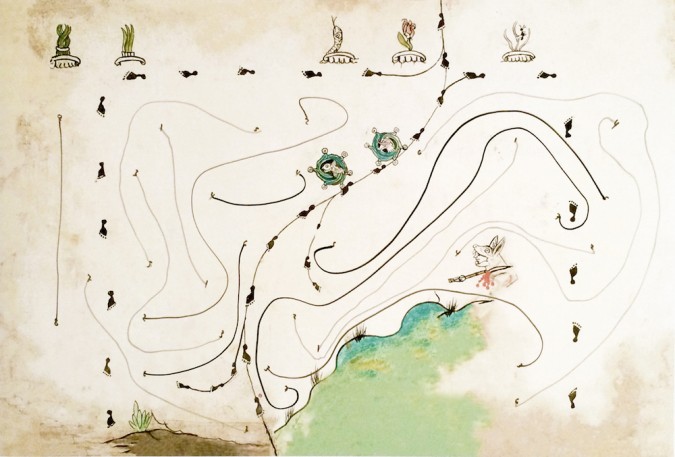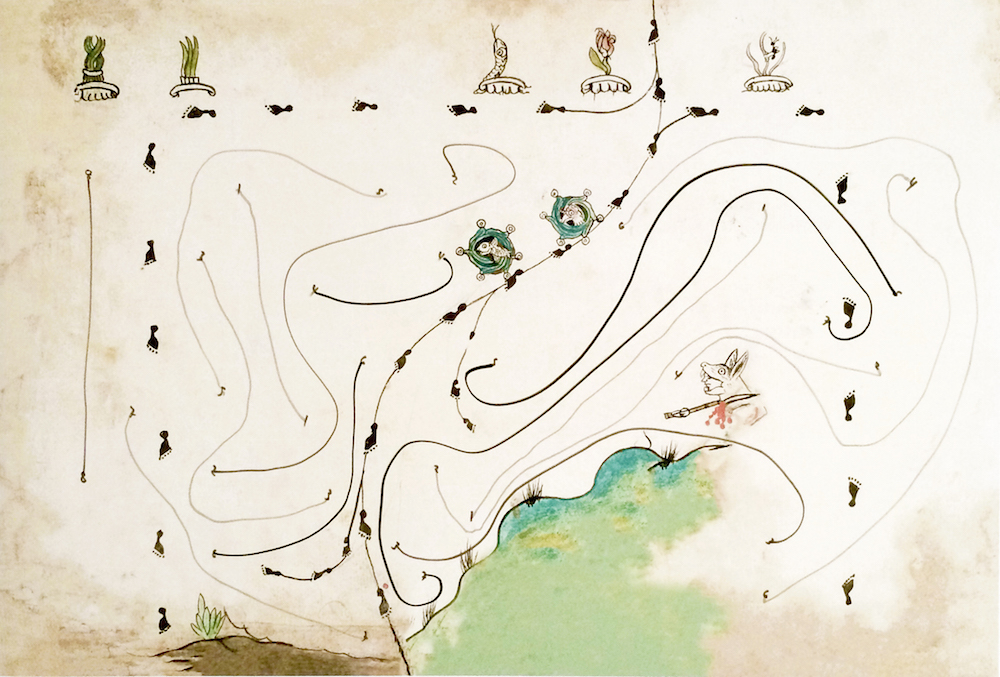
Love Thy Neighbor
Love Thy Neighbor is part of an exhibition series called The Neighbors, taking place at The Bronx Museum of the Arts and presenting ways in which visual artists address identity politics. The first iteration of the series consisted of a group exhibition gathering artworks that brought to bear issues of class through the domestication of art. The second iteration was organized as two simultaneous art exhibitions focusing on effects of immigration. The current exhibition, Love Thy Neighbor, centers on cultural difference, and features new work by visual artists Firelei Baez, Ignacio González-Lang, and Irvin Morazan.
In all these exhibitions, “the neighbor” has been regarded to explore the so-called Other. For its part, the title of this current exhibition refers to the enduring mandate of “Love Thy Neighbor” as a proposition to acknowledge the stranger, a foreigner, or those outside from one’s immediate position. Rather than suggesting an emotional bond with individuals or communities who resemble one another, the exhibition, as the said proposition guiding it, encourages a welcoming of alterity. The intent is to ultimately emphasize the significance of comprehension rather than simple allegiance. Artworks can offer that experience, providing a sensible articulation to consider different world views.
The participating artists in Love Thy Neighbor address pressing issues of our times in various ways, with artworks exploring cultural processes of “othering.” Now, whereas the theme of identity in the visual arts has commonly manifested through the expression of shared values and common beliefs in a given community, or, more often than not, expected to represent symbolic stability, the artists in this exhibition focus instead on an identity’s intentional disarticulation—on identities fractured from a particular origin and separated from a positive certainty, on processes of identification and misidentification, too.
Firelei Baez’s new paintings on paper for Love Thy Neighbor are a continuation of her longstanding investigations surrounding cultural points of encounter, specifically the ways in which Caribbean narratives shape bodies, myths, and histories. With an interest in addressing the blending of species, her new work is inspired by the composition of becoming self and other at once, not only uniquely individual, but also singularly indistinguishable. In creating the work in Love Thy Neighbor, the artist was particularly inspired by a fable of pollination between a wasp and an orchid, which French philosophers Gilles Deleuze and Félix Guattari used to establish identity as a dynamic process of encounter and difference. Portraying human figures made from flora and fauna, Baez creates her own fable, with her visual explorations fusing body and pleasure.
Since 2004, Ignacio González-Lang has been exploring the inter-related practices of profiling and surveillance, with an interest in working with print and digital media and biometrics. The artist has collected police drawings of criminal suspects from local newspapers for over a decade, which are regularly published in dailies to crowd-source information related to police investigations. For Antisocial, created especially for Love Thy Neighbor, the artist employs this archive to develop a photo-based installation that wraps around the gallery space. The installation consists of more than one hundred discrete photo-composites printed on clay board, each combining a press clipping of a police sketch and an image drawn from the popular social-media app Instagram (using the hash tag #NewYorkCity). The result is a collection of over one hundred individual portraits of New York City dwellers with common settings as their background.
Irvin Morazan’s work for Love Thy Neighbor examines the geography of the Americas. The artist reproduces maps from the sixteenth-century manuscript Historia Tolteca Chichimeca, originally written in Nahuatl in Mexico. The manuscript presents a diagrammatic cartography of routes and passages of markets, dwellings, and displacements of an indigenous community colonized by Spain. On these maps, Morazan traces imaginary immigration routes, sketches made by undocumented immigrants in the United States, as well as illustrations inspired by a Salvadoran game called Tripa Chuca, a pastime which consists of creating a map between two people through the use of lines and inter-connected numbers. As a child, Morazan immigrated alone to the United States from his native El Salvador. These drawings, then, document the history of his displacement and cultural exchanges.
The figure of el coyote—or border-crossing agent, who led Morazan through Central America, Mexico, and into the United States—is also a protagonist in his work overall, and particularly inspires a sculpture by the artist included in the exhibition. This sculpture, which is partly created as a headdress, was used for Volver, Volver, a new performance by Morazan, which took place at the museum on the afternoon of Sunday, March 5, 2017. You can watch video documentation of Volver, Volver here.
Love Thy Neighbor is on view at The Bronx Museum of the Arts from March 1 to June 11, 2017. Here, below, you may find images of the process of organizing the exhibition to date.























































